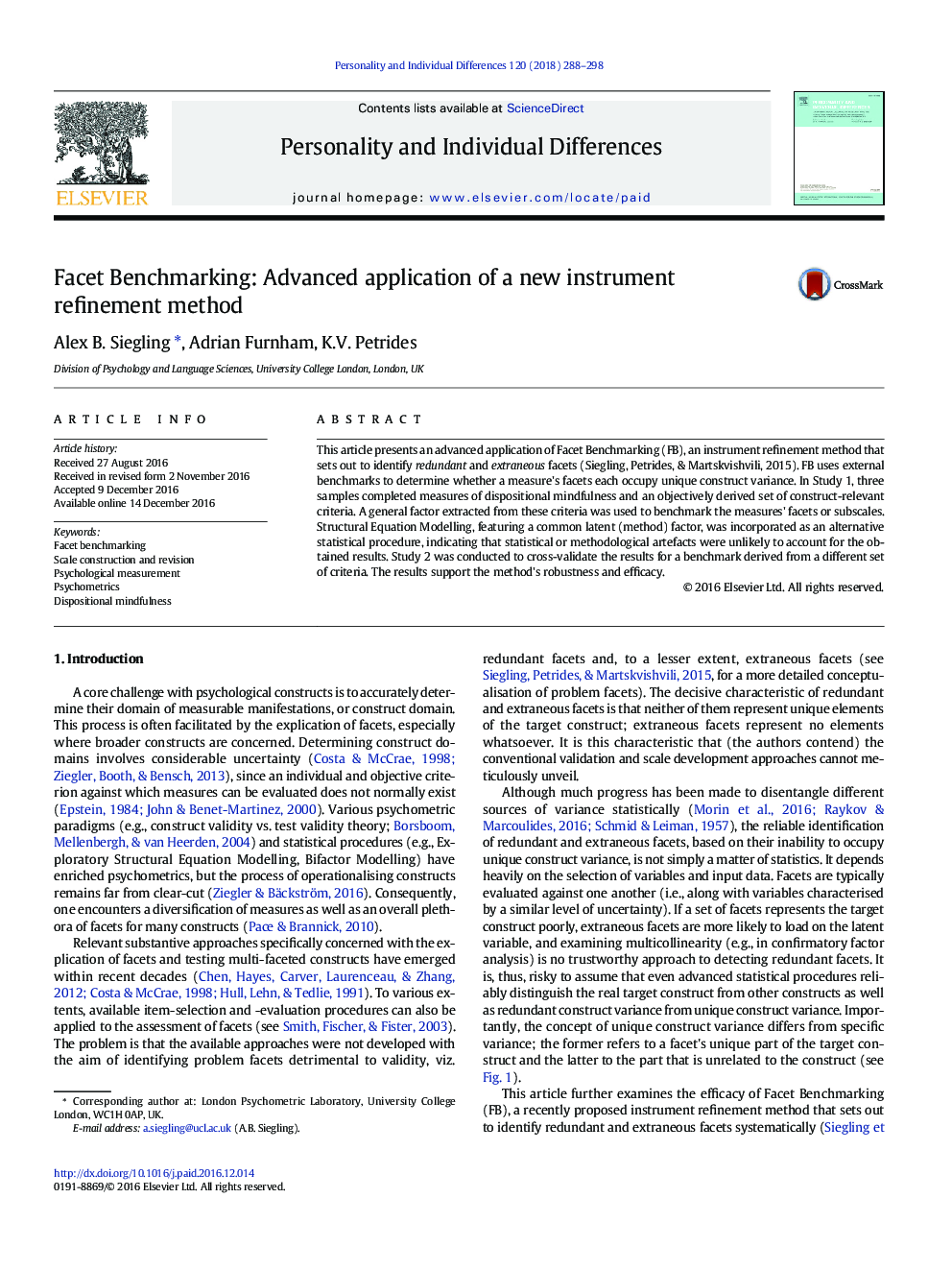| Article ID | Journal | Published Year | Pages | File Type |
|---|---|---|---|---|
| 5035552 | Personality and Individual Differences | 2018 | 11 Pages |
â¢An advanced application of Facet Benchmarking was conducted in the context of mindfulness.â¢The results of two studies support the method's robustness and efficacy.â¢There was no evidence that methodological or statistical artefacts accounted for the results.
This article presents an advanced application of Facet Benchmarking (FB), an instrument refinement method that sets out to identify redundant and extraneous facets (Siegling, Petrides, & Martskvishvili, 2015). FB uses external benchmarks to determine whether a measure's facets each occupy unique construct variance. In Study 1, three samples completed measures of dispositional mindfulness and an objectively derived set of construct-relevant criteria. A general factor extracted from these criteria was used to benchmark the measures' facets or subscales. Structural Equation Modelling, featuring a common latent (method) factor, was incorporated as an alternative statistical procedure, indicating that statistical or methodological artefacts were unlikely to account for the obtained results. Study 2 was conducted to cross-validate the results for a benchmark derived from a different set of criteria. The results support the method's robustness and efficacy.
